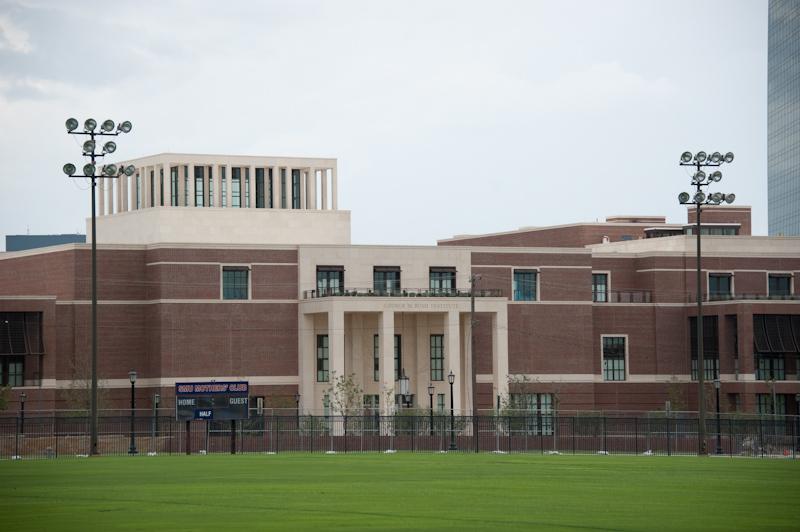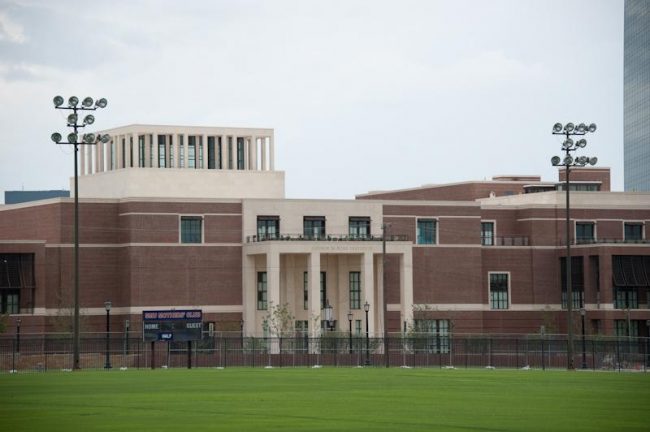
The Bush Library is set to open in April of 2013 to a host of former presidents and national level pundits and celebrities. (Sidney Hollingsworth/The Daily Campus)
Walking on campus one can’t help noticing the majestic brick structure towering over the eastern landscape of SMU. Over the summer, the iron skeleton fleshed itself with the Georgian-style red bricks typical of SMU.
In April 2013, the long-awaited George W. Bush Presidential Center will at last open to the public.
Brad Cheves, SMU vice president of development and external affairs, is optimistic for the Center’s eventual opening.
“SMU and Dallas [are] the best locations – for accessibility, visibility, constituent support, and association with a distinguished university and a dynamic city,” Cheves said.
Former President George W. Bush and the Bush Foundation have worked closely with SMU to make this center – comprised of the library, museum and independent institute – a reality. Bush and former First Lady and alumna Laura Bush, both Dallas residents, have been very active and visual in their support of the center’s presence at SMU.
Both have attended ceremonies, participated in symposia and, in Bush’s case, “dropped by” political science and journalism class lectures.
However, not all reactions to the center have been positive.
“Some members of the faculty and the United Methodist Church expressed concern about the Bush Institute, because it reports to the foundation and not the university. Their fear was that it would be a partisan entity that did not value freedom of expression, as SMU does,” Cheves said.
The responsibility of allaying these concerns fell to SMU President Turner.
Turner is confident SMU’s academic integrity will foster bipartisanship. According to Cheves, Turner “made it clear that the cherished principles of SMU – academic freedom [and] open dialogue – would not be compromised, and indeed would be enhanced through such a resource for discussion and debate.”
The Institute’s symposia reflected such academic integrity with many topics that “transcend politics.” These topics include education and opportunities for women, the use of technology in freedom movements, and global health.
The museum will boast a vast collection of art important to the Bush family. In addition, the library will archive every photograph, document and email pertaining to the Bush administration.
The center will contain more electronic data than all of the other presidential libraries combined, making it the most technologically advanced presidential library of the 21st century.
Relics of historic events of our generation will also be on display at the center.
A twisted steel girder from the World Trade Center and a bullhorn used by Bush to address workers at Ground Zero after the terrorist attacks head the 9/11 collection, a compilation of research regarding Sept. 11, 2001 and terrorism.
The George W. Bush Presidential Center will open, champagne will flow, and an epicenter of this century’s historiography will make its home at SMU.
“The articles, books, programs and dialogue that derive from the Center’s resources will result in perspectives that evolve over time,” Cheves said.
The legacy of the first president of the new millennium making his library home at SMU coincides with the university’s centenary celebration.









